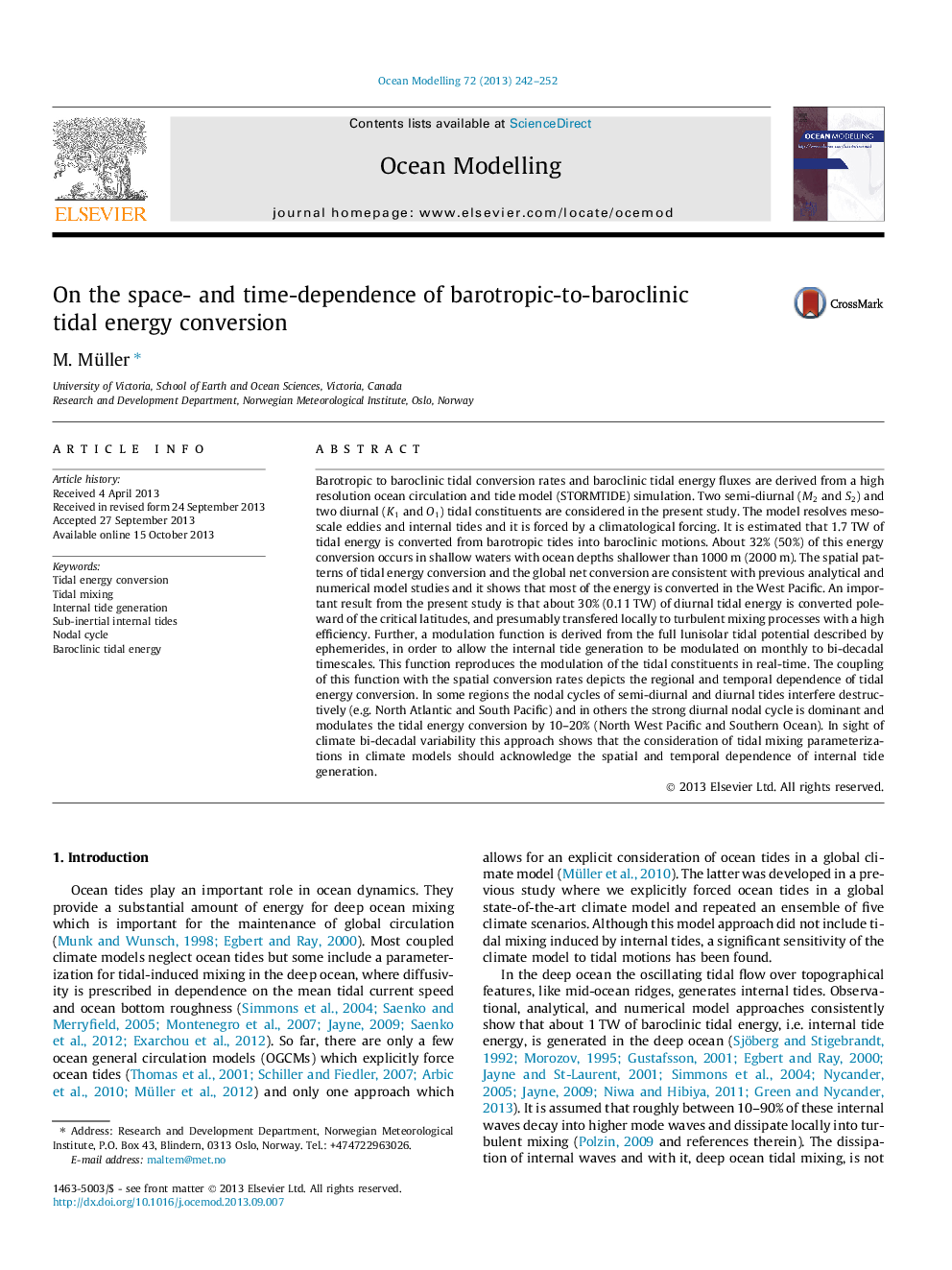| کد مقاله | کد نشریه | سال انتشار | مقاله انگلیسی | نسخه تمام متن |
|---|---|---|---|---|
| 6388248 | 1627776 | 2013 | 11 صفحه PDF | دانلود رایگان |
عنوان انگلیسی مقاله ISI
On the space- and time-dependence of barotropic-to-baroclinic tidal energy conversion
دانلود مقاله + سفارش ترجمه
دانلود مقاله ISI انگلیسی
رایگان برای ایرانیان
کلمات کلیدی
موضوعات مرتبط
مهندسی و علوم پایه
علوم زمین و سیارات
علم هواشناسی
پیش نمایش صفحه اول مقاله

چکیده انگلیسی
Barotropic to baroclinic tidal conversion rates and baroclinic tidal energy fluxes are derived from a high resolution ocean circulation and tide model (STORMTIDE) simulation. Two semi-diurnal (M2 and S2) and two diurnal (K1 and O1) tidal constituents are considered in the present study. The model resolves mesoscale eddies and internal tides and it is forced by a climatological forcing. It is estimated that 1.7Â TW of tidal energy is converted from barotropic tides into baroclinic motions. About 32% (50%) of this energy conversion occurs in shallow waters with ocean depths shallower than 1000Â m (2000Â m). The spatial patterns of tidal energy conversion and the global net conversion are consistent with previous analytical and numerical model studies and it shows that most of the energy is converted in the West Pacific. An important result from the present study is that about 30% (0.11Â TW) of diurnal tidal energy is converted poleward of the critical latitudes, and presumably transfered locally to turbulent mixing processes with a high efficiency. Further, a modulation function is derived from the full lunisolar tidal potential described by ephemerides, in order to allow the internal tide generation to be modulated on monthly to bi-decadal timescales. This function reproduces the modulation of the tidal constituents in real-time. The coupling of this function with the spatial conversion rates depicts the regional and temporal dependence of tidal energy conversion. In some regions the nodal cycles of semi-diurnal and diurnal tides interfere destructively (e.g. North Atlantic and South Pacific) and in others the strong diurnal nodal cycle is dominant and modulates the tidal energy conversion by 10-20% (North West Pacific and Southern Ocean). In sight of climate bi-decadal variability this approach shows that the consideration of tidal mixing parameterizations in climate models should acknowledge the spatial and temporal dependence of internal tide generation.
ناشر
Database: Elsevier - ScienceDirect (ساینس دایرکت)
Journal: Ocean Modelling - Volume 72, December 2013, Pages 242-252
Journal: Ocean Modelling - Volume 72, December 2013, Pages 242-252
نویسندگان
M. Müller,